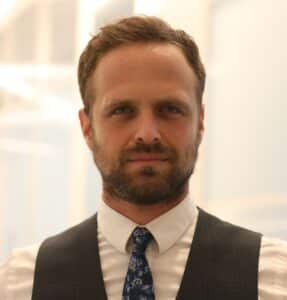
Chen Arad is COO of Solidus Labs, which provides market surveillance and risk monitoring for digital-asset markets.
What were the key theme(s) for your business in 2020?
Growth driven by a 400 percent increase in demand for our crypto-native fraud-detection and risk monitoring tools. As the year is closing, it is very clear that 2020 was the year the digital asset industry, driven by tightening regulation and institutional demand, has recognized effective risk monitoring is critical for market integrity and growth. This came in addition to the pandemic raising general awareness for financial fraud and manipulation risks.
What was the highlight of 2020?
For anyone involved in digital assets, 2020 was the year that institutional investments turned from an optimistic buzzword to a reality. Microstrategy now holds 70,470 Bitcoin worth more than $1.1 billion, institutional-focused crypto funds like Grayscale manage $13.7 billion in AUM, pension and endowment funds increasingly engagedand 80 percent of Fidelity’s clients indicated they find crypto assets appealing; and 36 percent already invested in them – and those are but a few examples. In addition to the huge potential gains demonstrated by Bitcoin’s bull run, this institutionalization is driven by regulatory clarity, and is behind a general maturation of the market as digital asset firms race to attract institutional investors through better infrastructure like more effective risk monitoring, prime brokerage services, and more.
What surprised you in 2020?
New crypto-specific market manipulation typologies that we are constantly learning more about. As more and more crypto asset markets deploy advanced risk monitoring, our systems detect less and less wholesale manipulation like the wash-trading and pump & dump schemes formerly prevalent in crypto markets during the 2017 rally. Instead, we’re constantly identifying new forms of manipulation that attempt to take advantage of the unique market structures of these markets – the more complex a market, the more opportunities exist to manipulate it, and the more sophisticated risk monitoring systems have to become.
What trends are getting underway that people may not know about but will be important?
2020 was very focused on regulatory developments – and we’ve seen a lot more clarity coming from regulators in terms of their expectations. It’s not a one-way street and, in 2021, regulators are expecting the industry to demonstrate its commitment to market integrity. Some of the most important enablers for crypto in the coming year will be industry-driven efforts to work together to provide better and safer conditions for investors and, particularly, institutions. One of the best examples is the threat of cross-market manipulation, which the SEC points to when it rejects ETF applications. We are currently working with a group of institutional investors and large crypto exchanges to set up an industry-first data-sharing consortium we believe is necessary to address this concern. The more the industry takes initiative to address such challenges, the more we’ll see balanced regulation (vs. draconian rules imposed by regulators in less innovation-friendly regimes), institutional engagement and growth.
What are your customer’s pain points and how have they changed from one year ago?
Today, our digital asset-native clients are increasingly focused on attracting institutional investors, and they understand that to do so they must have institutional-grade fraud-detection and risk monitoring tools that can ensure transparency and integrity.
Additionally, we are also increasingly working with traditional financial firms who want to expose their clients to digital assets. To do so in a compliant manner, they approach us to ensure they have effective ways to monitor trading risk, and maintain the same regulation-first focus they have in other, more traditional, asset classes.







